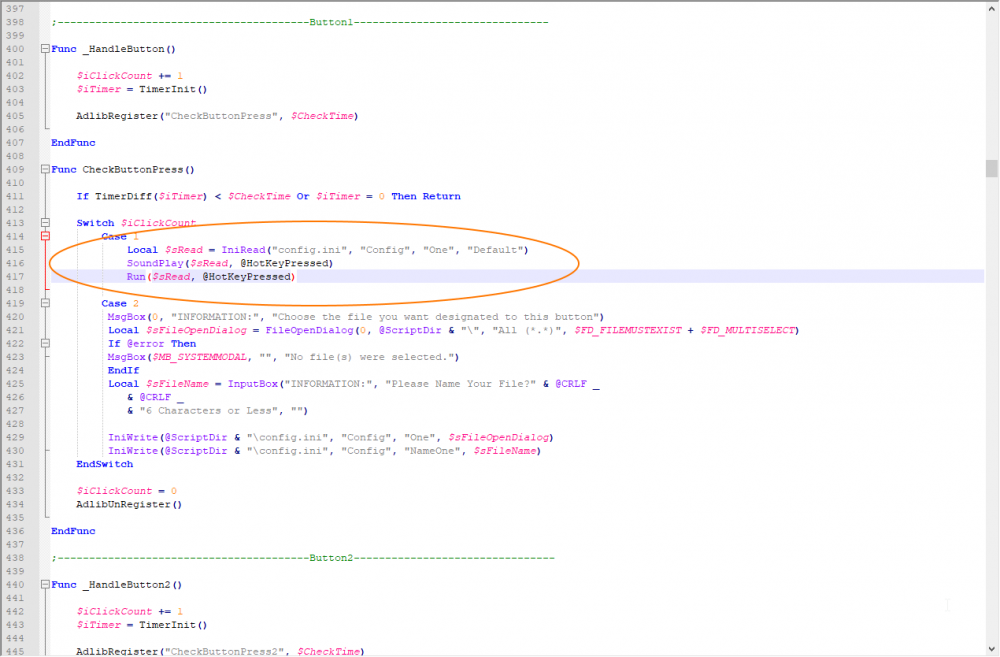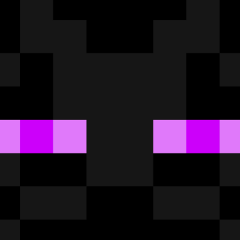Search the Community
Showing results for tags 'exe'.
-
Hi there, maybe someone can help me. If automated a script that should xcopy from various paths (all within C:\*\...) to a external Disk (HDD). (Backup data of users who get new pcs win10) I tried it several times with windows 10 home/pro any clients and never got any failure. (after the testing was done) But when i tried to run it shortly ago on a windows 7 pro x64 client, the script started (as i saw in taskmanagr.exe) but i didn't performed any of the actions when i came down to the xcopy part. (in the systemtray, it showd the scipt to start, but it was marked as "paused" and i couldn't stop this. No plan why) i inserted/attached the script down here. Does anyone know why? any ideas?backup-scrp.au3 PS: the tray debug line just added by today (i re-try it tomorrow when i've set up another win7 client to test with) PPS: i know my coding-style isn't very optimized
- 1 reply
-
- windows 7 pro
- x64
-
(and 3 more)
Tagged with:
-
Hi. If I embedd a compiled autoit script into my new script, is there a possibility to pass some data from the compiled embedded exe to my script? I know it's possible with an ini or txt-file. But is there something without creating a file? I plan to return an array or an unformatted string of datas with delimiters inside. Any ideas? Regards, Conrad
-
Hey Everyone, I haven't been here in a while and recently picked up my old project. Still an FNG! To the point: I want to be able to push the button and either play an mp3, open a file, or open an exe program (all with the same button). The problem is that I don't know how to code for that at "case 1" Case 1 Local $sRead = IniRead("config.ini", "Config", "One", "Default") SoundPlay($sRead, @HotKeyPressed) <------------------------------- Run($sRead, @HotKeyPressed) <------------------------------- This 'Run' doesn't work even by itself! See code below for layout. If you need more information I will attach more code or answer any questions. Any help is greatly appreciated. Much Respect, Pike Func _HandleButton() $iClickCount += 1 $iTimer = TimerInit() AdlibRegister("CheckButtonPress", $CheckTime) EndFunc Func CheckButtonPress() If TimerDiff($iTimer) < $CheckTime Or $iTimer = 0 Then Return Switch $iClickCount Case 1 Local $sRead = IniRead("config.ini", "Config", "One", "Default") SoundPlay($sRead, @HotKeyPressed) Run($sRead, @HotKeyPressed) Case 2 MsgBox(0, "INFORMATION:", "Choose the file you want designated to this button") Local $sFileOpenDialog = FileOpenDialog(0, @ScriptDir & "\", "All (*.*)", $FD_FILEMUSTEXIST + $FD_MULTISELECT) If @error Then MsgBox($MB_SYSTEMMODAL, "", "No file(s) were selected.") EndIf Local $sFileName = InputBox("INFORMATION:", "Please Name Your File?" & @CRLF _ & @CRLF _ & "6 Characters or Less", "") IniWrite(@ScriptDir & "\config.ini", "Config", "One", $sFileOpenDialog) IniWrite(@ScriptDir & "\config.ini", "Config", "NameOne", $sFileName) EndSwitch $iClickCount = 0 AdlibUnRegister() EndFunc
-
Hey All, Yes, this is an odd request. But is there a way to bulk up the size of the compiled program? I know many want to reduce it's size, but I want to increase it. What methods do you suggest?
-
Is it possible to compile script without any icon resources included? When I make exe it uses default system icon of current OS even if I compile as console application. On other versions of Windows it looks a little strange Update: It seems that the only way is remove icons from exe after compilation using resource editors like ResHacker. another bad solution: Using corrupted 35 bytes icon file. Windows can't load it and shows default system icon. #pragma compile(Icon, broken.ico) broken.ico
-
Hello! I want to make a script that changes the filesize of program files while still having them run as usual. I tried FileWrite() but then the program wouldnt be recognized as a runnable program, could you guys help me to the right path?
-
Hi AutoIters! Im trying to launch a .exe file that is nested within the program files (x86) folder structure. i have already used the standard RunAs Syntax and found that it fails to launch the application. I have switched to Run and that seems to work. My issue is I have to use RunAs as the applicaton would need to run under a completely different account. The Current logged in user is a Local User on the machine, however, the application must be run as a domain user. The Machine is domain connected. have tried the following: RunAs("username","logonpassword", $RUN_LOGON_PROFILE, "D:\Program Files (x86)\Vendor\Application Name\Exe Location\Executable.exe") The above fails to launch, there are no errors or syntax issues, it just does nothing when the variables are replaced for the correct values. I did the same using the Run command Run("D:\Program Files (x86)\Vendor\Application Name\Exe Location\Executable.exe") That seems to work fine, but runs in local user context. Any thoughts? Could it be a local Machine rights issue? Or have i missed something glaring in my script
-
This baby can do almost any language! I found Gleany on this site and set it up on a fresh win10 install. all i would need to do to make it build an exe of the search files app we discovered is the .NET Target Framework download to build 100 % but the exe works and generates! You also need to add the path the the version of csc.exe that you want to run. MSBuild is part of .NET and can read your .csproj file. YOU can develop .NET OR C/C++ on this baby! Super lightweight (fit for crappy laptops), and you can use any dev compilers you wish, Ming, MS, etc, whatever. To use the build, you need to open the csproj file, else, to check your syntax it can compile individual files as well. The warning are because I do not have the .NET 4.6 Targeting Pack installed... LOL, and I could get rid of the Core warning, yes, I did not want to build a .NET Core.dll I wanted a live x64 exe! Told you MSBUILD could handle .CSPROJ, .VBPROJ, and all others Microsoft. Don't let Visual Code or Visual Studio slow you down, although, this works with Visual Code as well but there is only debugging in CORE.DLL projects ListFiles Example.zip
-
Afternoon! Just a quick one as this has dawned on me recently when creating a little program. When calling an executable I've created like Run(otherapp.exe) from within my executable is there a best practice to ensure things have gone smoothly? So for example, should I monitor the PID to ensure it runs and closes within an acceptable timeframe? Or within my other executable should I do EXITs in a certain way after functions and return codes etc? Could be a silly question but thought I'd ask.
- 2 replies
-
- exe
- best practice
-
(and 1 more)
Tagged with:
-
Hi, Ich hab ein Script für Windows Updates, dass nach dem OOBE aufgerufen werden soll. Run/RunOnce ist daher nicht möglich. Stattdessen möchte ich das Script in den Autostart schreiben lasse. Wenn die OOBE beendet wird und der Administrator angemeldet wird, soll das Update-Script einmalig aufgerufen werden und sich anschl. selbst löschen. Lang rede, kurzer Sinn: Wie kann ich folgendes Script in den Autostart schreiben? RunWait(@ComSpec & " /c " & "C:\Windows\System32\WindowsPowerShell\v1.0\powershell.exe -File C:\UA\Scripts\win-updates.ps1 -MaxUpdatesPerCycle 100 -RestartRequired 1", "") Ich würde ungern eine BAT oder EXE reinkopieren, da ich es unsauber finde. Die müsste ja auch zusätzlich irgendwo liegen. Danke Eggsplorer
-
Hello Guys, Is there a way to have Auto it Exe messages/line number when you hover over the tray icon just at it shows when you run Au3.? For an example, if I the script has paused due to WinWait or Sleep I could hover over the icon and it shows the line where it's at. Is there a way to achieve the same with the compiled exe? Many thanks for the help!
-
Good morning AutoIt community! Today, I'm here to ask you if you know how to run an .exe from cmd.exe ( Command Prompt )... My intention is to read a .ini file where I store an information that has to be included in the shell, and run an .exe with that information... I'll give you an example Local $aFileCartellaAuditCopy = _FileListToArray($sPercorsoAuditCopy, "*.txt") If @error Then MsgBox($MB_ICONERROR, "Errore!", "Errore durante la lettura della lista dei file nella directory" & @CRLF & $sPercorsoAuditCopy & @CRLF & "Errore: " & @error) Return False Else Local $iPID = Run("cmd.exe" & ' /k "C:\Users\Portatile-60\Desktop\HmiCheckLogIntegrity.exe" "C:\Users\Portatile-60\Desktop\AuditTrailDosaggio0_20170327_151335_DOSAGGIO_PW_01.txt"') ; & " /k " & '"' & $sHmiCheckLogIntegrity & '"' & " " & '"' & $sPercorsoAuditCopy & "\" & $aFileCartellaAuditCopy[1] & '"', "", @SW_SHOW, $STDOUT_CHILD) Return True EndIf This code is in a function, that returns False if it can retrive at least a file from the path stored in the .ini file... Else I would like to run the Command Prompt with the .exe and with a parameter of that .exe, but it seems to not work properly. Could please anyone tell me why? Thanks
-
I have an exe with name "erwin Data Modeler r9.7 (32-bit)_2332.exe" THe lat 4 digits 2332 may vary and also the version number r9.7 also might vary. So, how to write a generic expression so that the exe can be picked from the current directory {with any version (9.7 or anything) and any build number (2332 or anything)} Thanks in Advance
-
When we compile our code through Aut2exe, version is missing if we check the properties of the compiled executable. Can any one suggest how to set a version number to the compiled exe.
-
Which of the two should I use? It seems pragma compile offers access to resource fields that AutoIt3Wrapper only allows access to via Res_Field, such as CompanyName and ProductName. AutoIt3Wrapper offers help with versioning in the form of automatic version increase, pragma doesn't. (afaik) Should one ever combine the two in one script? Could I e.g. increase the ProductVersion automatically as well with AutoIt3Wrapper? I'm using the Beta, 3.3.13.19 with Scite 3.4.4 Full as well as TortoiseSVN and WinMerge.
- 14 replies
-
- compile
- autoit3wrapper
-
(and 3 more)
Tagged with:
-
Hello all, this script(wrapper) uses Alternative Data Streams to store INI formatted data in the active executable even while it is running. This is great for standalone executables, or storing data you don't want a user being able to edit! There are four simple commands: Func _iniwrite($section, $key, $value, $stream = "DEFAULT") return IniWrite(@ScriptFullPath&":"&$stream, $section, $key, $value) EndFunc Func _iniread($section, $key, $default = "", $stream = "DEFAULT") return IniRead(@ScriptFullPath&":"&$stream, $section, $key, $default) EndFunc Func _inidelete($section, $key = "", $stream = "DEFAULT") if $key <> "" Then Return IniDelete(@ScriptFullPath&":"&$stream, $section, $key) Else Return IniDelete(@ScriptFullPath&":"&$stream, $section) EndIf EndFunc Func _inirenamesection($section, $newsection, $flag = 0, $stream = "DEFAULT") return IniRenameSection(@ScriptFullPath&":"&$stream, $section, $newsection, $flag) EndFunc Simply copy and paste these functions into your script!
-
Hi guys, found on the Internet code to reload explorer.exe, the code works as expected, but the error takes:Error parsing function call Run("explorer.exe",Call(ProcessClose("explorer.exe"))) How to hide error or fix this? Thanks in advance!
-
PE File Overlay Extraction (and Certificate info) Executable and other PE files can contain "overlays", which is data that is appended to the end of the file. This data can be important, such as setup packages, Authenticode signatures*, and overlays for AutoIt scripts. Or it could just be extra unneeded cruft (sometimes). Whatever the case is, I wanted to find a way to detect if this data was present. This project is actually a result of dealing with so-called 'File Optimizer' programs that would strip Overlay information from Executables (leaving compiled AutoIt scripts crippled!). And also a legit >answer to my topic in Help and Support. While future versions of AutoIt (new beta releases and any official release after v3.3.8.1) are putting tokenized scripts into a resource within the executable, all current compiled scripts are still put together with the tokenized script appended as an overlay. The UDF here allows you to detect any overlay a PE (Portable Executable) file may have, and allows you to extract the Overlay into a separate file - or alternatively extract the exe without the overlay. You can actually extract AutoIt scripts and write them to .A3X files using this method, if you so desire. But don't be a hacker! Mommy will scold you.. If you separate both the exe and overlay, you can combine them again using a simple file-append, something like: copy /b stripped.exe+script.a3x myscript.exe _ Anyway, the method to detect overlays is relatively simple - we need to look through the PE file's various headers and find out where the last section of data/code is and its size. If that last section doesn't reach the end of the file, then you will find an Overlay waiting at the end of the final section. However, there's an issue with Certificate Tables (or signatures) which makes it a bit more tricky to detect - basically the end of the last section and the beginning of the Certificate must be examined to find the sandwiched-in overlay. *Auhenticode signatures note: These and other certificates are actually linked to in the PE Data Directory, which I had missed in earlier versions. Now they are accounted for however, and not considered overlays nor are they allowed to be extracted (well, you could extract them but the signature is bound to the unique checksum of the file and needs to be referenced from the Data Directory). IMPORTANT: The example now queries which part to save, and "No" button means 'yes' to Exe extract. (I didn't want to mess around with creating dialog windows, sorry). So, here's the UDF with a working example (note the 128MB limit can easily be worked around): ; ======================================================================================================== ; <FilePEOverlayExtract.au3> ; ; UDF and Example of getting Overlay info and optionally extracting that info to a file. ; ; NOTE that this isn't intended to be used to hack or decompile AutoIt executables!! ; It's main purpose is to find Overlays and Certificates and extract/save or just report the info ; ; Functions: ; _PEFileGetOverlayInfo() ; Returns a file offset for overlay data (if found), and the size ; ; Author: Ascend4nt ; ======================================================================================================== ; Arry indexing Global Enum $PEI_OVL_START = 0, $PEI_OVL_SIZE, $PEI_CERT_START, $PEI_CERT_SIZE, $PEI_FILE_SIZE ; ---------------------- MAIN CODE ------------------------------- Local $sFile, $sLastDir, $sLastFile, $aOverlayInfo $sLastDir = @ScriptDir While 1 $sFile=FileOpenDialog("Select PE File To Find Overlay Data In",$sLastDir,"PE Files (*.exe;*.dll;*.drv;*.scr;*.cpl;*.sys;*.ocx;*.tlb;*.olb)|All Files (*.*)",3,$sLastFile) If @error Or $sFile="" Then Exit $sLastFile=StringMid($sFile,StringInStr($sFile,'\',1,-1)+1) $sLastDir=StringLeft($sFile,StringInStr($sFile,'\',1,-1)-1) $aOverlayInfo = _PEFileGetOverlayInfo($sFile) If $aOverlayInfo[$PEI_OVL_START] = 0 Then ConsoleWrite("Failed Return from _PEGetOverlayOffset(), @error = " & @error & ", @extended = " & @extended & @CRLF) MsgBox(64, "No Overlay Found", "No overlay found in " & $sLastFile) ContinueLoop EndIf ConsoleWrite("Return from _PEFileGetOverlayInfo() = " & $aOverlayInfo[$PEI_OVL_START] & ", @extended = " & $aOverlayInfo[$PEI_OVL_SIZE] & @CRLF) If $aOverlayInfo[$PEI_OVL_START] Then Local $hFileIn = -1, $hFileOut = -1, $sOutFile, $iMsgBox, $bBuffer, $bSuccess = 0 $iMsgBox = MsgBox(35, "Overlay found in " & $sLastFile, "Overlay Found. File size: " & $aOverlayInfo[$PEI_FILE_SIZE] & ", Overlay size: " & $aOverlayInfo[$PEI_OVL_SIZE] & @CRLF & @CRLF & _ "Would you like to:" & @CRLF & _ "[Yes]: extract and save Overlay" & @CRLF & _ "[No]: extract Exe without Overlay" & @CRLF & _ "[Cancel]: Do Nothing") If $iMsgBox = 6 Then If $aOverlayInfo[$PEI_OVL_SIZE] > 134217728 Then MsgBox(48, "Overlay is too huge", "Overlay is > 128MB, skipping..") ContinueLoop EndIf $sOutFile = FileSaveDialog("Overlay - SAVE: Choose a file to write Overlay data to (from " & $sLastFile&")", $sLastDir, "All (*.*)", 2 + 16) If Not @error Then While 1 $hFileOut = FileOpen($sOutFile, 16 + 2) If $hFileOut = -1 Then ExitLoop $hFileIn = FileOpen($sFile, 16) If $hFileIn = -1 Then ExitLoop If Not FileSetPos($hFileIn, $aOverlayInfo[$PEI_OVL_START], 0) Then ExitLoop ; AutoIt 2/3 Signature check requires 32 bytes min. If $aOverlayInfo[$PEI_FILE_SIZE] > 32 Then $bBuffer = FileRead($hFileIn, 32) If @error Then ExitLoop ; AutoIt2 & AutoIt3 signatures If BinaryMid($bBuffer, 1, 16) = "0xA3484BBE986C4AA9994C530A86D6487D" Or _ BinaryMid($bBuffer, 1 + 16, 4) = "0x41553321" Then ; "AU3!" ConsoleWrite("AutoIt overlay file found" & @CRLF) EndIf FileWrite($hFileOut, $bBuffer) ; subtract amount we read in above $bSuccess = FileWrite($hFileOut, FileRead($hFileIn, $aOverlayInfo[$PEI_OVL_SIZE] - 32)) Else $bSuccess = FileWrite($hFileOut, FileRead($hFileIn, $aOverlayInfo[$PEI_OVL_SIZE])) EndIf ExitLoop WEnd If $hFileOut <> -1 Then FileClose($hFileOut) If $hFileIn <> -1 Then FileClose($hFileIn) EndIf ElseIf $iMsgBox = 7 Then If $aOverlayInfo[$PEI_FILE_SIZE] - $aOverlayInfo[$PEI_OVL_SIZE] > 134217728 Then MsgBox(48, "EXE is too huge", "EXE (minus overlay) is > 128MB, skipping..") ContinueLoop EndIf $sOutFile = FileSaveDialog("EXE {STRIPPED} - SAVE: Choose a file to write EXE (minus Overlay) to. (from " & $sLastFile&")", $sLastDir, "All (*.*)", 2 + 16) If Not @error Then $bSuccess = FileWrite($sOutFile, FileRead($sFile, $aOverlayInfo[$PEI_OVL_START])) EndIf Else ContinueLoop EndIf If $bSuccess Then ShellExecute(StringLeft($sOutFile,StringInStr($sOutFile,'\',1,-1)-1)) Else MsgBox(64, "Error Opening or writing to file", "Error opening, reading or writing overlay info") EndIf EndIf WEnd Exit ; ------------------------ UDF Function ---------------------------- ; =================================================================================================================== ; Func _PEFileGetOverlayInfo($sPEFile) ; ; Returns information on Overlays present in a Windows PE file (.EXE, .DLL etc files), as well as Certificate Info. ; ; Only certain executables contain Overlays, and these are always located after the last PE Section, ; and most times before any Certificate info. Setup/install programs typically package their data in Overlays, ; and AutoIt compiled executables (at least up to v3.3.8.1) contain an overlay in .A3X tokenized format. ; ; Certificate info is available with or without an overlay, and comes after the last section and typically after ; an Overlay. Certificates are included with signed executables (such as Authenticode-signed) ; ; The returned info can be used to examine or extract the Overlay or Certificate, or just to examine the data ; (for example, to see if its an AutoIt tokenized script). ; ; NOTE: Any Overlays packaged into Certificate blocks are ignored, and the methods to extract this info may ; fail if the Certificate Table entries have their sizes modified to include the embedded Overlay. ; ; The returned information can be useful in preventing executable 'optimizers' from stripping the Overlay info, ; which was the primary intent in creating this UDF. ; ; ; Returns: ; Success: A 5-element array, @error = 0 ; [0] = Overlay Start (if any) ; [1] = Overlay Size ; [2] = Certificate Start (if any) ; [3] = Certificate Size ; [4] = File Size ; ; Failure: Same 5-element array as above (with all 0's), and @error set: ; @error = -1 = Could not open file ; @error = -2 = FileRead error (most likely an invalid PE file). @extended = FileRead() @error ; @error = -3 = FileSetPos error (most likely an invalid PE file) ; @error = 1 = File does not exist ; @error = 2 = 'MZ' signature could not be found (not a PE file) ; @error = 3 = 'PE' signature could not be found (not a PE file) ; @error = 4 = 'Magic' number not recognized (not PE32, PE32+, could be 'ROM (0x107), or unk.) @extended=number ; ; Author: Ascend4nt ; =================================================================================================================== Func _PEFileGetOverlayInfo($sPEFile) ;~ If Not FileExists($sPEFile) Then Return SetError(1,0,0) Local $hFile, $nFileSize, $bBuffer, $iOffset, $iErr, $iExit, $aRet[5] = [0, 0, 0, 0] Local $nTemp, $nSections, $nDataDirectories, $nLastSectionOffset, $nLastSectionSz Local $iSucces=0, $iCertificateAddress = 0, $nCertificateSz = 0, $stEndian = DllStructCreate("int") $nFileSize = FileGetSize($sPEFile) $hFile = FileOpen($sPEFile, 16) If $hFile = -1 Then Return SetError(-1,0,$aRet) ; A once-only loop helps where "goto's" would be helpful Do ; We keep different exit codes for different operations in case of failure (easier to track down what failed) ; The function can be altered to remove these assignments of course $iExit = -2 $bBuffer = FileRead($hFile, 2) If @error Then ExitLoop $iExit = 2 ;~ 'MZ' in hex (endian-swapped): If $bBuffer <> 0x5A4D Then ExitLoop ;ConsoleWrite("MZ Signature found:"&BinaryToString($bBuffer)&@CRLF) $iExit = -3 ;~ Move to Windows PE Signature Offset location If Not FileSetPos($hFile, 0x3C, 0) Then ExitLoop $iExit = -2 $bBuffer = FileRead($hFile, 4) If @error Then ExitLoop $iOffset = Number($bBuffer) ; Though the data is in little-endian, because its a binary variant, the conversion works ;ConsoleWrite("Offset to Windows PE Header="&$iOffset&@CRLF) $iExit = -3 ;~ Move to Windows PE Header Offset If Not FileSetPos($hFile, $iOffset, 0) Then ExitLoop $iExit = -2 ;~ Read in IMAGE_FILE_HEADER + Magic Number $bBuffer = FileRead($hFile, 26) If @error Then ExitLoop $iExit = 3 ; "PE/0/0" in hex (endian swapped) If BinaryMid($bBuffer, 1, 4) <> 0x00004550 Then ExitLoop ; Get NumberOfSections (need to use endian conversion) DllStructSetData($stEndian, 1, BinaryMid($bBuffer, 6 + 1, 2)) $nSections = DllStructGetData($stEndian, 1) ; Sanity check If $nSections * 40 > $nFileSize Then ExitLoop ;~ ConsoleWrite("# of Sections: " & $nSections & @CRLF) $bBuffer = BinaryMid($bBuffer, 24 + 1, 2) ; Magic Number check (0x10B = PE32, 0x107 = ROM image, 0x20B = PE32+ (x64) If $bBuffer = 0x10B Then ; Adjust offset to where "NumberOfRvaAndSizes" is on PE32 (offset from IMAGE_FILE_HEADER) $iOffset += 116 ElseIf $bBuffer = 0x20B Then ; Adjust offset to where "NumberOfRvaAndSizes" is on PE32+ (offset from IMAGE_FILE_HEADER) $iOffset += 132 Else $iExit = 4 SetError(Number($bBuffer)) ; Set the error (picked up below and set in @extended) to the unrecognized Number found ExitLoop EndIf ;~ 'Optional' Header Windows-Specific fields $iExit = -3 ;~ -> Move to "NumberOfRvaAndSizes" at the end of IMAGE_OPTIONAL_HEADER If Not FileSetPos($hFile, $iOffset, 0) Then ExitLoop $iExit = -2 ;~ Read in NumberOfRvaAndSizes $nDataDirectories = Number(FileRead($hFile, 4)) ; Sanity and error check If $nDataDirectories <= 0 Or $nDataDirectories > 16 Then ExitLoop ;~ ConsoleWrite("# of IMAGE_DATA_DIRECTORY's: " & $nDataDirectories & @CRLF) ;~ Read in IMAGE_DATA_DIRECTORY's (also moves file position to IMAGE_SECTION_HEADER) $bBuffer = FileRead($hFile, $nDataDirectories * 8) If @error Then ExitLoop ;~ IMAGE_DIRECTORY_ENTRY_SECURITY entry is special - it's "VirtualAddress" is actually a file offset If $nDataDirectories >= 5 Then DllStructSetData($stEndian, 1, BinaryMid($bBuffer, 4 * 8 + 1, 4)) $iCertificateAddress = DllStructGetData($stEndian, 1) DllStructSetData($stEndian, 1, BinaryMid($bBuffer, 4 * 8 + 4 + 1, 4)) $nCertificateSz = DllStructGetData($stEndian, 1) If $iCertificateAddress Then ConsoleWrite("Certificate Table address found, offset = " & $iCertificateAddress & ", size = " & $nCertificateSz & @CRLF) EndIf ; Read in ALL sections $bBuffer = FileRead($hFile, $nSections * 40) If @error Then ExitLoop ;~ DONE Reading File info.. ; Now to traverse the sections.. ; $iOffset Now refers to the location within the binary data $iOffset = 1 $nLastSectionOffset = 0 $nLastSectionSz = 0 For $i = 1 To $nSections ; Within IMAGE_SECTION_HEADER: RawDataPtr = offset 20, SizeOfRawData = offset 16 DllStructSetData($stEndian, 1, BinaryMid($bBuffer, $iOffset + 20, 4)) $nTemp = DllStructGetData($stEndian, 1) ;ConsoleWrite("RawDataPtr, iteration #"&$i&" = " & $nTemp & @CRLF) ; Is it further than last section offset? ; AND - check here for rare situation where section Offset may be outside Filesize bounds If $nTemp > $nLastSectionOffset And $nTemp < $nFileSize Then $nLastSectionOffset = $nTemp DllStructSetData($stEndian, 1, BinaryMid($bBuffer, $iOffset + 16, 4)) $nLastSectionSz = DllStructGetData($stEndian, 1) EndIf ; Next IMAGE_SECTION_HEADER $iOffset += 40 Next ;~ ConsoleWrite("$nLastSectionOffset = " & $nLastSectionOffset & ", $nLastSectionSz = " & $nLastSectionSz & @CRLF) $iSucces = 1 ; Everything was read in correctly Until 1 $iErr = @error FileClose($hFile) ; No Success? If Not $iSucces Then Return SetError($iExit, $iErr, $aRet) ;~ Now to calculate the last section offset and size to get the 'real' Executable end-of-file ; [0] = Overlay Start $aRet[0] = $nLastSectionOffset + $nLastSectionSz ; Less than FileSize means there's Overlay info If $aRet[0] And $aRet[0] < $nFileSize Then ; Certificate start after last section? It should If $iCertificateAddress >= $aRet[0] Then ; Get size of overlay IF Certificate doesn't start right after last section ; 'squeezed-in overlay' $aRet[1] = $iCertificateAddress - $aRet[0] Else ; No certificate, or < last section - overlay will be end of last section -> end of file $aRet[1] = $nFileSize - $aRet[0] EndIf ; Size of Overlay = 0 ? Reset overlay start to 0 If Not $aRet[1] Then $aRet[0] = 0 EndIf $aRet[2] = $iCertificateAddress $aRet[3] = $nCertificateSz $aRet[4] = $nFileSize Return $aRet EndFunc FilePEOverlayExtract.au3 ~prev downloads: 34 Updates: 2013-08-09-rev2: Fixed: Didn't detect 'sandwiched-in' Overlays - Overlays appearing between the end of code/data and before a Certificate section Changed: UDF now returns an array of information: Overlay offset and size, Certificate offset and size, and filesize Fixed: Overlays < 32 bytes may have been written incorrectly 2013-08-09: Fix: Certificate Table now identified and excluded from false detection as Overlay. 2013-08-07: Fix: Section Offsets that start beyond the filesize are now accounted for. I'm not sure when this happens, but it's been reported to happen on other sites. Modified: A more reasonable filesize limit. Modified: Option to Extract just the Executable without Overlay, or the Overlay itself 2013-08-03: Fixed: Calculation of FileRead data was off by 16 (which still worked okay, but was not coded correctly!) Fixed: @extended checking after calls to other code
- 21 replies
-
A3X Script Extract With newer versions of AutoIT (v3.3.10.0+), the compiled script is no longer appended to files as an overlay, and instead is embedded as a binary resource. This leads my previous AutoIt-script detection UDF lacking. However, since that UDF (>PE File Overlay Extraction) was targeted towards overlays in general, its still a worthwhile tool to have. This UDF on the other hand is pretty specific - it lets you detect and optionally extract A3X scripts from a compiled executable. The method is rather straightforward - it looks for a resource type of RT_RCDATA with a resource name of "SCRIPT", and then extracts the binary, testing for the A3X signature along the way. The main UDF has two functions: _FileContainsScriptResource() _FileContainsA3XScript() The first of these functions is there only for checking if a resource with "SCRIPT" exists. Its main purpose is to report on possible embedded scripts. I made this a separate function primarily because of issues with compressed executables. Tools like UPX and MPRESS can compress the resources as well as the rest of the executable, so any detection of the A3X signature will fail in those circumstances. (Note that UPX and MPRESS don't compress overlay data, which is why the older Overlay-Extraction A3X-detection worked regardless) The second function will both check for and optionally return the A3X script resource as binary. It also does a signature check for verification. Anyway, here's an example of its usage. The main UDF is attached below. #include <_FileContainsA3XScript.au3> ; ======================================================================================================== ; <A3XScriptExtract.au3> ; ; Example of detecting AutoIt Scripts embedded as binary resources (in AutoIt v3.3.10.0+ exe's), and ; extracting them to .A3X files. ; ; This script can be invoked in interactive or command-line mode. ; Passing an executable as a parameter will extract an A3X resource, writing it out to ; an A3X file with the same base name as the executable. ; ; Uses <_FileContainsA3XScript.au3> functions ; ; Author: Ascend4nt ; ======================================================================================================== ; ---------------------- MAIN CODE ------------------------------- Local $sFile, $sLastDir, $sLastFile, $binA3X, $iErr, $nA3XSize ; Command-line parameter received? Simply do a direct A3X extraction If $CmdLine[0] Then $sFile = $CmdLine[1] If Not FileExists($sFile) Then Exit 1 $binA3X = _FileContainsA3XScript($sFile, True) If @error Then Exit @error $nA3XSize = @extended Local $nExt = StringInStr($sFile, '.', 0, -1) If $nExt Then $sFile = StringLeft($sFile, $nExt - 1) EndIf $sFile &= '.a3x' Exit Not FileWrite($sFile, $binA3X) EndIf ; No command-line parameters, query the user in interactive mode $sLastDir = @ScriptDir While 1 $sFile=FileOpenDialog("Select PE File To Look for Embedded A3X scripts In",$sLastDir,"PE Files (*.exe;*.dll;*.scr)|All Files (*.*)",3,$sLastFile) If @error Or $sFile="" Then Exit $sLastFile = StringMid($sFile, StringInStr($sFile, '\', 1, -1) + 1) $sLastDir = StringLeft($sFile, StringInStr($sFile, '\', 1, -1) - 1) ; Resource 'Script' check $bScriptResourceFound = _FileContainsScriptResource($sFile) ConsoleWrite("_FileContainsScriptResource() return: " & $bScriptResourceFound & ", @error = " & @error & ", @extended = " & @extended & @CRLF) ; Actual A3X script resource check. True to return the A3X script as binary $binA3X = _FileContainsA3XScript($sFile, True) $iErr = @error $nA3XSize = @extended ; No A3X script found? If $iErr Or $nA3XSize = 0 Then ConsoleWrite("Failed Return from _FileContainsA3XScript(), @error = " & $iErr & ", @extended = " & $nA3XSize & @CRLF) MsgBox(64, "No AutoIt A3X script resource Found", "AutoIt A3X script resource not Found!" & @CRLF & _ ($bScriptResourceFound ? "However, *A* script resource was found" : "No 'Script' resource found either") & @CRLF & _ "for '" & $sLastFile & "'") ContinueLoop EndIf ConsoleWrite("_FileContainsA3XScript() return type: " & VarGetType($binA3X) & ", value = " & (IsBinary($binA3X) ? "[A3X_Binary]" : $binA3X) & @CRLF) ConsoleWrite(@TAB & "@error = " & $iErr & ", @extended = " & $nA3XSize & @CRLF) Local $hFileOut = -1, $sOutFile, $iMsgBox, $bSuccess = 0 $iMsgBox = MsgBox(35, "A3X script resource found in " & $sLastFile, "A3X script resource found. File size: " & FileGetSize($sLastFile) & _ ", A3X script size: " & $nA3XSize & @CRLF & @CRLF & _ "Would you like to Extract and save A3X file?") If $iMsgBox = 6 Then ;~ If $nA3XSize > 134217728 Then ;~ MsgBox(48, "A3X script is too huge", "A3X script size is > 128MB, skipping..") ;~ ContinueLoop ;~ EndIf $sOutFile = FileSaveDialog("A3X script - SAVE: Choose a file to write A3X script data to (from " & $sLastFile&")", _ $sLastDir, "AutoIt Compiled Sript (*.a3x)|All (*.*)", 2 + 16) If @error Then ContinueLoop ; Simple check for extension - if none, add .a3x If StringInStr($sOutFile, '.') = 0 Then $sOutFile &= ".a3x" ; Else $hFileOut = FileOpen($sOutFile, 16 + 2) If $hFileOut <> - 1 Then $bSuccess = FileWrite($hFileOut, $binA3X) FileClose($hFileOut) EndIf Else ContinueLoop EndIf If $bSuccess Then ShellExecute(StringLeft($sOutFile,StringInStr($sOutFile,'\',1,-1)-1)) Else MsgBox(64, "Error Opening or writing to file", "Error opening, reading, or saving A3X file") EndIf WEnd Exit _FileContainsA3XScript.au3 *edit: Modified example: Now alternatively accepts a command-line parameter for automated script extraction
-
Hi guys, please bare with me for a moment here... My goal: To be able to take the error line number returned by the EXE file and locate the actual line in the source. I believe most of the AutoIt users are coming to this issue at some point. I realize the final source, before the compilation is done, is the combined source of all the include files and the main script etc. So I figured if I have a way to get this combined source, that would give me a solution to this problem. And I spent the last couple of days (more than 10 hours a day) searching in the forum and asking some questions in different threads. And with the help of few people, I found a way (using the Obfuscator) to get this source and the line numbers were actually MATCHING! However this solution introduced a WHOLE LOT of other problems for me and broke some of the functionality in my script since it has a lot of Call() and ObjEvent() functions. My code turned out to be un-obfuscatable. And for the record, I do not need any obfuscation done at all, nor I need the unused included functions stripped down (even though it made my EXE a 30% smaller). I needed the Obfuscator just to get this final piece of code to be able to achieve My goal. So all this got me thinking... Please correct me if I'm wrong, because I don not have any knowledge of the internals of a compiler. Since Aut2exe is the one that combines all the code together and then working it's magic to create the EXE, there should be a pint in this process where that code is available in its final form. Then why isn't there a command line option to dump the final combined source in a file just before it is compiled? Once again, I do not know the internals of the compiler but my logic dictates that this would be the most reasonable and straightforward solution. Please share your thoughts and also, if any of you knows a way to achieve my goal without using the Obfuscator, I would LOVE to here it! EDIT: And here is the solution: ( I've tried to explain it as simply as I can, so even the beginners can understand it.)
- 60 replies
-
- error
- line number
-
(and 2 more)
Tagged with:
-
Hi every body! I have a strange problem that i can't solve: I made a GUI with a ToolBar, and i want to display custom icons in it. It's OK if i don't compile the script and i try to add the icons into my ImageList directly from disque, but when i compile and embeed my icons in the Exe file, then my icons wont appear at all! I made a simplified sample GUI to show you my problem, but here, it's another problem: the first added icon won't appear, and the others (2) appear, and the standard compiled script's icons appear normally! I really have a big headach in this! Here is joined my script with the icons, please compile it to see the problem. Thanks! ToolBar icons.zip
-
HI I have an exe file Application (.exe) Win32 Cabinet Self-Extractor im trying to list the files inside this exe and extracting only 1 of the files. any one know how to do this?











